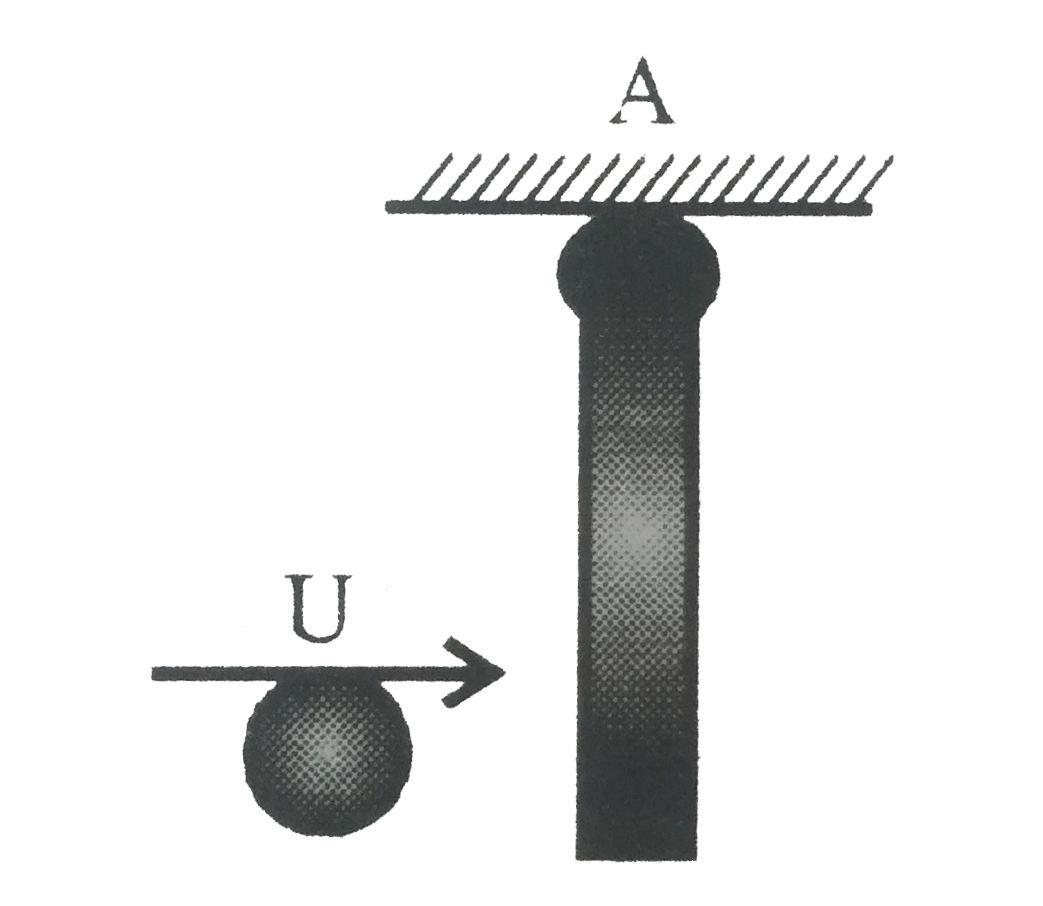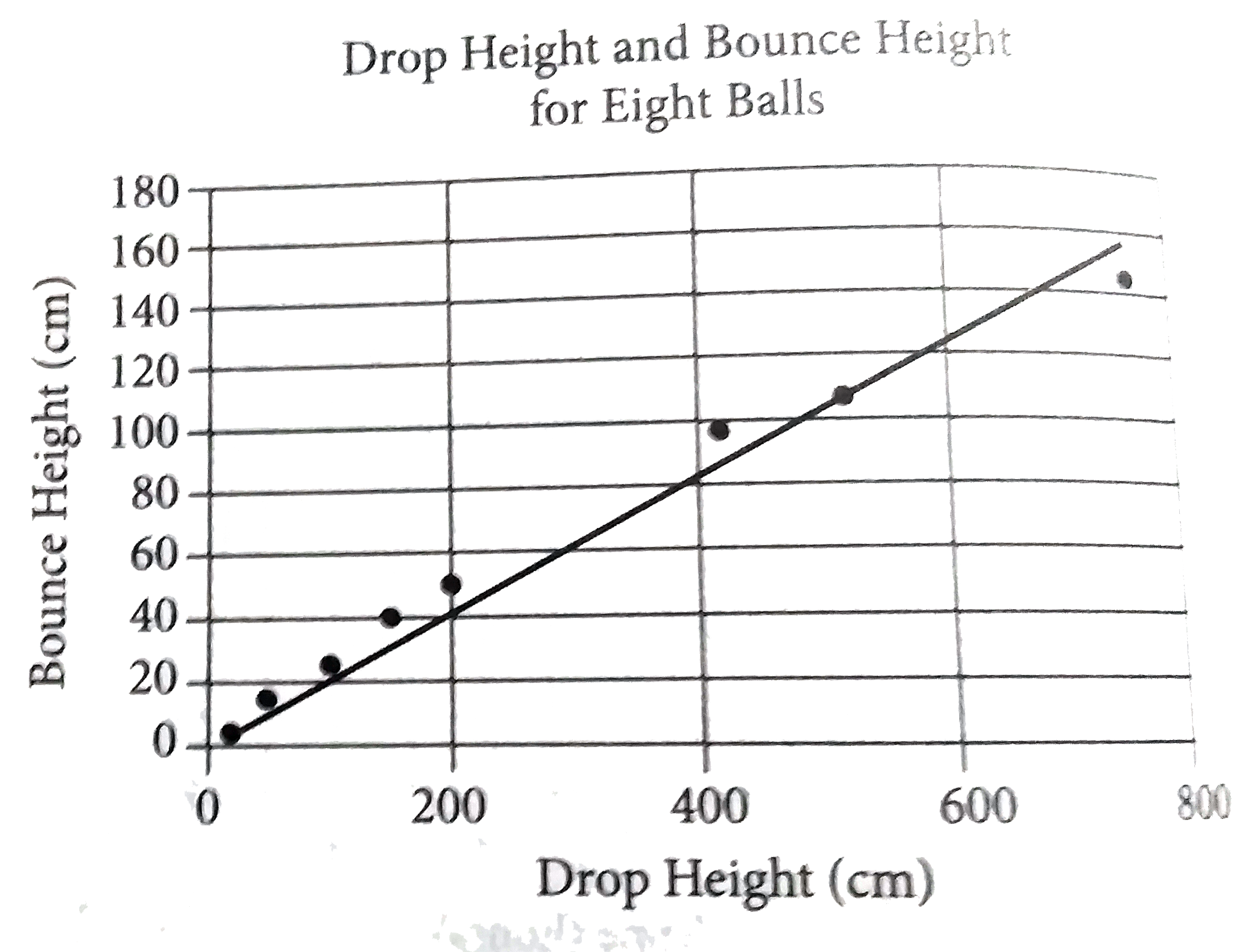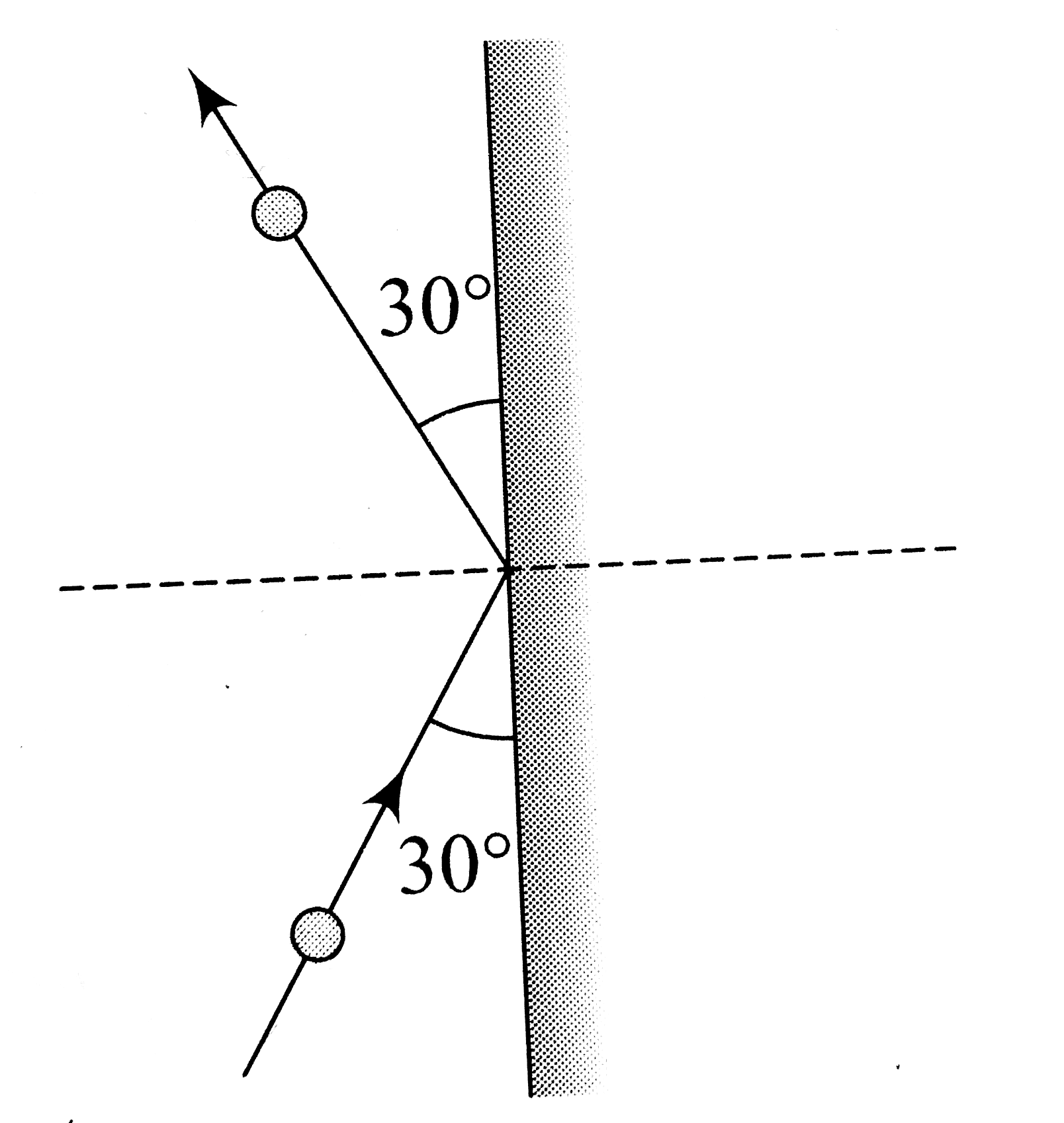A metalic ball strikes a wall and drops dead whereas tennis ball having the same mass and velocity bounces back. Which of the following is correct ?
The Tennis ball suffers a greater change in momentum
Metalic ball suffers a greater change in momentum
The momentum of the tennis ball is graeater than that of metallic ball before collision
The momentum of the metallic ball is greater than the tennis ball before collision
The correct Answer is:A
To solve the problem, we need to analyze the behavior of the two balls (the metallic ball and the tennis ball) when they strike the wall and determine the changes in momentum for each.
1. Identify the Given Information:
- Both balls (metallic ball and tennis ball) have the same mass (m) and the same initial velocity (v) before striking the wall.
2. Analyze the Collision of the Tennis Ball:
- When the tennis ball strikes the wall, it bounces back with the same speed (v) in the opposite direction.
- The initial momentum of the tennis ball before the collision is pi=mv (moving towards the wall).
- After the collision, the final momentum of the tennis ball is pf=−mv (moving away from the wall).
- The change in momentum (Δp) for the tennis ball can be calculated as:
Δptennis=pf−pi=(−mv)−(mv)=−2mv
- The magnitude of the change in momentum is 2mv.
3. Analyze the Collision of the Metallic Ball:
- When the metallic ball strikes the wall, it does not bounce back; instead, it drops down.
- The initial momentum of the metallic ball before the collision is pi=mv (moving towards the wall).
- After the collision, since it drops dead, its final momentum is pf=0 (it has no momentum after it drops).
- The change in momentum (Δp) for the metallic ball can be calculated as:
Δpmetallic=pf−pi=0−(mv)=−mv
- The magnitude of the change in momentum is mv.
4. Compare the Changes in Momentum:
- Change in momentum for the tennis ball: 2mv
- Change in momentum for the metallic ball: mv
- Since 2mv>mv, the tennis ball experiences a greater change in momentum than the metallic ball.
5. Conclusion:
- Therefore, the correct statement is that the tennis ball suffers a greater change in momentum compared to the metallic ball.
Final Answer:
The correct option is that the tennis ball suffers a greater change in momentum.
---
- Both balls (metallic ball and tennis ball) have the same mass (m) and the same initial velocity (v) before striking the wall.
- When the tennis ball strikes the wall, it bounces back with the same speed (v) in the opposite direction.
- The initial momentum of the tennis ball before the collision is pi=mv (moving towards the wall).
- After the collision, the final momentum of the tennis ball is pf=−mv (moving away from the wall).
- The change in momentum (Δp) for the tennis ball can be calculated as:
Δptennis=pf−pi=(−mv)−(mv)=−2mv
- The magnitude of the change in momentum is 2mv.
- When the metallic ball strikes the wall, it does not bounce back; instead, it drops down.
- The initial momentum of the metallic ball before the collision is pi=mv (moving towards the wall).
- After the collision, since it drops dead, its final momentum is pf=0 (it has no momentum after it drops).
- The change in momentum (Δp) for the metallic ball can be calculated as:
Δpmetallic=pf−pi=0−(mv)=−mv
- The magnitude of the change in momentum is mv.
- Change in momentum for the tennis ball: 2mv
- Change in momentum for the metallic ball: mv
- Since 2mv>mv, the tennis ball experiences a greater change in momentum than the metallic ball.
- Therefore, the correct statement is that the tennis ball suffers a greater change in momentum compared to the metallic ball.
The correct option is that the tennis ball suffers a greater change in momentum.
Topper's Solved these Questions
- LAWS OF MOTIONBOOK - AAKASH INSTITUTE ENGLISHCHAPTER - LAWS OF MOTIONEXERCISE - ASSIGNMENT ( SECTION -B) objective type questions (one option is correct)
59 Videos
- LAWS OF MOTIONBOOK - AAKASH INSTITUTE ENGLISHCHAPTER - LAWS OF MOTIONEXERCISE - ASSIGNMENT ( SECTION -C) objective type questions (More than one options are correct)
21 Videos
- LAWS OF MOTIONBOOK - AAKASH INSTITUTE ENGLISHCHAPTER - LAWS OF MOTIONEXERCISE - TRY YOURSELF
69 Videos
- KINETIC THEORYBOOK - AAKASH INSTITUTE ENGLISHCHAPTER - KINETIC THEORYEXERCISE - EXERCISE (ASSIGNMENT) SECTION - D Assertion - Reason Type Questions
10 Videos
- MAGNETISM AND MATTER BOOK - AAKASH INSTITUTE ENGLISHCHAPTER - MAGNETISM AND MATTER EXERCISE - ASSIGNMENT (SECTION D)
26 Videos
Similar Questions
A metal ball hits a wall and does not rebound whereas a rubber ball of the same mass on hitting the wall the same velocity rebounds back. It can be concluded that–
View SolutionIn the given figure a ball strikes a uniform rod of same mass elastically and rod is hinged at point A. Then which of the statements (s)is/are correct ?
 .
.
View Solution
Knowledge Check

The scatterplot above shows the height in centimeters for both the drop and bounce of eight different balls of the same type. The line of best fit for the data is also shown. According to the lines of best fit, which of the following is closest to the predicted increase in bounce height, in centimeters, for every increase of 100 centimeters in drop height?A25B20C15D10
A ball of mass 1 kg moving with velocity →v=3ˆi+4ˆj collides with a wall and after collision velocity of the ball is −2ˆi+6ˆj . Which of the following unit vectors is perpendicular to wall?
View SolutionA particle of mass m moving at a velocity v strikes with the wall at an angle α with the wall and leaves ball making same angle with the wall. Choose the correct statemet (s) from the following.
View SolutionA ball is dropped by a passenger from the window of a train moving with uniform velocity. The ball will reach the ground following a
View SolutionA metallic ball and highly stretched spring are made of the same material and have the same mass. They are heated so that they melt. The latent heat required
View Solutionconsider the acceleration velocity and displacement of a tennis ball as it falls to the ground and bouces back. Derections of which of these changes in the process
View SolutionA 0.5kg ball moving with a speed of 12m/s strikes a hard wall at an angle of 30∘ with the wall. It is reflected with the same speed and at the same angle . If the ball is in contact with the wall for 0.25s, the average force acting on the wall is

View SolutionA ball of mass 1kg strikes a heavy plarform elastically, moving upwards with a velocity of 5m/s . The speed of the ball just before the collision is 10m/s downwards. Then the impulse imparted by the platform on the ball is

View Solution
